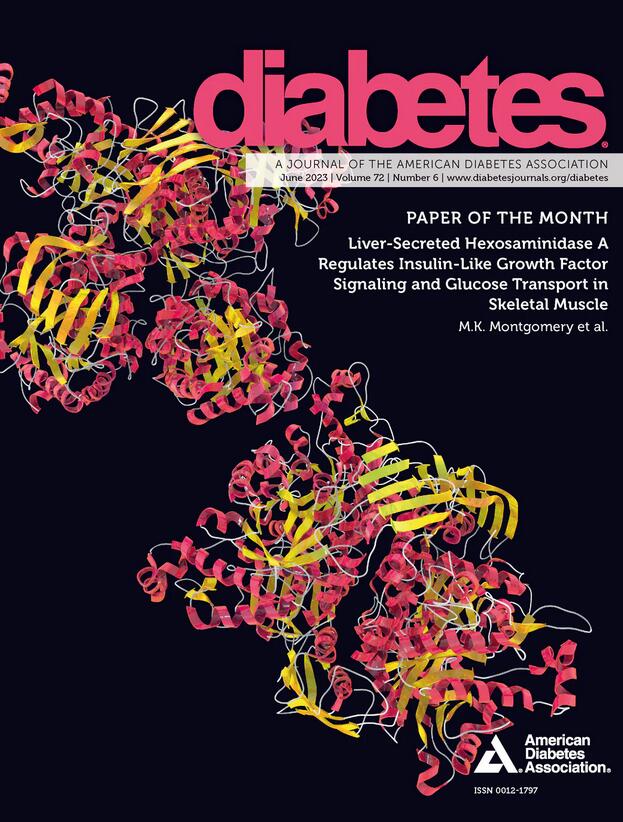1368-P:利用易于获得的临床数据预测糖尿病前期和糖尿病的模型
IF 7.5
1区 医学
Q1 ENDOCRINOLOGY & METABOLISM
引用次数: 0
摘要
简介与目的:肝硬化等慢性疾病会降低糖化血红蛋白作为糖尿病(DM)诊断指标的准确性。我们的目的是确定是否容易获得的临床数据可以用于改善普通人群中糖化血红蛋白以外的糖尿病的诊断。方法:我们分析了2005-2016年NHANES中有A1c和OGTT的13800名受试者。包括标准实验室和缺少12%数据的生命体征特征,我们将受试者分开,并应用机器学习(ML)方法XG Boost来识别OGTT 2小时葡萄糖(2hG)水平≥140 mg/dL(糖尿病前期)和≥200 mg/dL(糖尿病)的预测特征。结果:糖化血红蛋白和OGTT对糖尿病的检出率为5.3%,糖化血红蛋白单独检出率为0.4%,OGTT单独检出率为3.5%。在A1c为糖尿病前期的患者中,11.8%的患者2hG≥200mg /dL;无糖尿病前期患者2hG≥200mg /dL (A)的占1.5%。模型中包含了最重要的变量:年龄、身高、臂围、腰围、脉搏、血压、空腹血糖、胰岛素、铁、甘油三酯、糖化血红蛋白、胆固醇、血小板、GGT、肌酐、中性粒细胞百分比、尿白蛋白和肌酐、贫困率。糖尿病前期模型与A1c的AUC分别为0.76对0.67,糖尿病前期模型与A1c的AUC分别为0.92对0.87 (B)。A1c <;6.3%模型的平均阳性预测值(箱形图)高于A1c(蓝线)(C)。结论:将易于获得的临床数据纳入ML模型可以提高糖尿病前期和糖尿病的诊断。托马斯:没有。E. Tasali:没有。M.E.里内拉:顾问;89bio, Akero Therapeutics, Boehringer-Ingelheim, Eli Lilly and Company, Cytodyn, Inventiva Pharma, Echosens, Novo Nordisk, Madrigal Pharmaceuticals, Inc ., Intercept Pharmaceuticals, Inc ., Sagimet Biosciences。R.G. Mirmira:没有。W.F.帕克:没有。本文章由计算机程序翻译,如有差异,请以英文原文为准。
1368-P: A Prediction Model for Prediabetes and Diabetes Using Easily Obtainable Clinical Data
Introduction and Objective: Chronic diseases such as cirrhosis can reduce the accuracy of the hemoglobin A1c as a diagnostic test for diabetes (DM). We aimed to determine if easily obtained clinical data could be used to improve the diagnosis of DM beyond A1c in the general population. Methods: We analyzed 13,800 subjects from NHANES from 2005-2016 who had an A1c and OGTT. Including standard labs and vital signs features with <12% missing data, we split the subjects and applied the machine learning (ML) approach XG Boost to identify predictive features of OGTT 2-hour glucose (2hG) levels ≥140 mg/dL (pre-DM) and ≥200 mg/dL (DM). Results: The rate of DM by A1c and OGTT was 5.3%, by A1c alone was 0.4%, and by OGTT alone was 3.5%. Of those with pre-DM by A1c, 11.8% had 2hG ≥ 200 mg/dL; 1.5% of those without pre-DM had 2hG ≥ 200 mg/dL (A). The most important variables were included in the model: age, height, arm and waist circumference, pulse, blood pressure, fasting glucose, insulin, iron, and triglycerides, A1c, cholesterol, platelets, GGT, creatinine, neutrophil percentage, urine albumin and creatinine, and Poverty Ratio. The AUC of the model vs. the A1c for pre-DM was 0.76 vs. 0.67 and for DM was 0.92 vs. 0.87, respectively (B). For A1c < 6.3% the model had a higher average positive predictive value (boxplots) than the A1c (blue lines) (C). Conclusion: Incorporation of easily obtainable clinical data into a ML model can improve diagnosis of pre-DM and DM. Disclosure A. Hutchison: None. C. Thomas: None. E. Tasali: None. M.E. Rinella: Consultant; 89bio, Inc, Akero Therapeutics, Inc, Boehringer-Ingelheim, Eli Lilly and Company, Cytodyn, Inventiva Pharma, Echosens, Novo Nordisk, Madrigal Pharmaceuticals, Inc, Intercept Pharmaceuticals, Inc, Sagimet Biosciences. R.G. Mirmira: None. W.F. Parker: None.
求助全文
通过发布文献求助,成功后即可免费获取论文全文。
去求助
来源期刊

Diabetes
医学-内分泌学与代谢
CiteScore
12.50
自引率
2.60%
发文量
1968
审稿时长
1 months
期刊介绍:
Diabetes is a scientific journal that publishes original research exploring the physiological and pathophysiological aspects of diabetes mellitus. We encourage submissions of manuscripts pertaining to laboratory, animal, or human research, covering a wide range of topics. Our primary focus is on investigative reports investigating various aspects such as the development and progression of diabetes, along with its associated complications. We also welcome studies delving into normal and pathological pancreatic islet function and intermediary metabolism, as well as exploring the mechanisms of drug and hormone action from a pharmacological perspective. Additionally, we encourage submissions that delve into the biochemical and molecular aspects of both normal and abnormal biological processes.
However, it is important to note that we do not publish studies relating to diabetes education or the application of accepted therapeutic and diagnostic approaches to patients with diabetes mellitus. Our aim is to provide a platform for research that contributes to advancing our understanding of the underlying mechanisms and processes of diabetes.
 求助内容:
求助内容: 应助结果提醒方式:
应助结果提醒方式:


